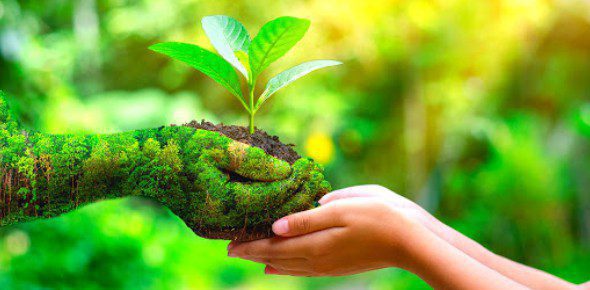Step into the lush landscapes of Kenya, and you’ll find yourself surrounded by a vibrant tapestry of indigenous trees. These botanical wonders not only add beauty to the environment but also play a crucial role in sustaining ecosystems, preserving cultural heritage, and combating climate change.
In this article, we’ll take you on an enlightening journey through Kenya’s indigenous tree species, exploring their significance, cultural impact, and the commendable efforts of the Eco Green Initiative to preserve and raise awareness about them.
We’ll also share practical ways for the average Kenyan to contribute to this vital cause. So, put on your hiking boots and let’s dive into Kenya’s green haven!
Embracing the Green Guardians: Indigenous Tree Species in Kenya
Kenya is home to a remarkable variety of indigenous tree species, each with its unique charm and benefits. Let’s meet some of these green guardians:
- Acacia spp.: The Iconic Umbrella Trees These majestic trees, with their distinctive umbrella-shaped canopies, are a familiar sight across Kenya’s savannah. Acacias provide shade to wildlife, serve as nesting sites for birds, and their seeds are a source of nourishment for many animals.
- Prunus africana: The African Cherry Known locally as “Mueru” or “Muiri,” the Prunus africana tree is highly valued for its medicinal properties. Its bark is used to treat various ailments, including prostate disorders, making it a vital part of traditional medicine in Kenya.
- Croton megalocarpus: The Croton Tree The Croton tree, also called “Mukinduri” or “Mugaa” in local languages, holds great economic value. Its seeds produce high-quality oil, used in industries such as soap-making and biodiesel production.
- Juniperus procera: The African Pencil Cedar With its towering stature and aromatic wood, the African Pencil Cedar is a striking presence in Kenya’s mountainous regions. It has cultural significance and is often used for construction, furniture, and carvings.
- Olea africana: The African Olive Tree The African Olive Tree, or “Olorien” in Maasai, is revered for its spiritual and medicinal properties. Its fruits are edible, and its wood is used for carvings and utensils.

The Vital Role of Indigenous Trees: Nature’s Superheroes
Indigenous trees are unsung heroes in maintaining the ecological balance and supporting human life. Let’s uncover their incredible roles:
- Biodiversity Hotspots: Indigenous trees provide habitats for numerous plant and animal species, contributing to the rich biodiversity of Kenya. From birds nesting in their branches to insects finding refuge in their trunks, these trees create thriving ecosystems.
- Carbon Sequestration: These green giants absorb carbon dioxide from the atmosphere, mitigating climate change by reducing greenhouse gas emissions. By planting and preserving indigenous trees, we can combat global warming and protect future generations.
- Soil Conservation: Their extensive root systems prevent erosion, protecting the fertility of the land and preventing landslides. These trees act as natural anchors, holding the soil together and preserving its nutrients.
- Water Regulation: Indigenous trees regulate water cycles, reducing flood risks and ensuring a stable water supply for communities. Their roots help in groundwater recharge, preventing water scarcity during dry seasons.
- Medicinal and Nutritional Value: Many indigenous tree species have medicinal properties, providing traditional remedies and nourishment to local populations. These trees are a treasure trove of natural medicines, promoting holistic health and well-being.
Cultural Significance: Roots That Run Deep
Indigenous trees hold aprofound cultural significance for Kenyan communities, acting as a bridge between the past, present, and future. Here’s a glimpse into their cultural impact:
- Sacred Sites: Certain tree species are revered as sacred and play a central role in spiritual practices and ceremonies. These trees serve as meeting places for community gatherings, symbolizing unity and connection with the divine.
- Traditional Medicine: Indigenous trees have been used for generations to treat various ailments and uphold traditional healing practices. Knowledge about the medicinal properties of these trees is passed down through oral traditions, ensuring the preservation of valuable healthcare wisdom.
- Folklore and Legends: These trees are often woven into captivating tales and legends, passing down ancestral wisdom from one generation to the next. They inspire storytelling, connecting communities to their roots and fostering a sense of cultural identity.
- Art and Crafts: The timber and bark of indigenous trees are used in intricate carvings, traditional artifacts, and exquisite crafts, showcasing Kenya’s artistic heritage. From wooden sculptures to woven baskets, these creations reflect the deep connection between nature and artistic expression.
Eco Green Initiative: Protecting Kenya’s Natural Heritage
Recognizing the importance of preserving indigenous trees, the Eco Green Initiative has taken up the mantle to safeguard these green treasures. Here’s how they’re making a difference:

- Reforestation Projects: The Eco Green Initiative is actively engaged in planting indigenous trees in degraded areas, restoring vital ecosystems and wildlife habitats. They organize tree planting events, involving local communities and schools to create a sense of ownership and environmental stewardship.
- Community Education: They organize awareness campaigns, workshops, and educational programs to educate local communities about the value of indigenous trees and sustainable practices. By empowering individuals with knowledge, they inspire collective action and behavioral change.
- Advocacy and Policy Support: The initiative collaborates with policymakers to develop and implement regulations that protect indigenous trees and promote their conservation. They actively engage in policy discussions, advocating for stronger environmental protection measures.
- Partnerships and Networking: Eco Green Initiative collaborates with like-minded organizations, businesses, and individuals to pool resources and amplify their impact. By forging partnerships, they create a network of support and work towards a shared goal of preserving Kenya’s natural heritage.
Every Kenyan Can Make a Difference: Planting Seeds of Change
You don’t need to be a superhero to contribute to the preservation of indigenous trees in Kenya. Here are some practical ways the average Kenyan can provide their input:
- Plant Indigenous Trees: Consider planting indigenous tree species in your backyard, community spaces, or participate in tree planting events organized by organizations like Eco Green Initiative. Each tree you plant adds to the collective effort of preserving Kenya’s biodiversity.
- Support Sustainable Products: Choose products made from sustainably sourced timber or materials derived from indigenous trees. This includes furniture, crafts, and even paper products. By supporting sustainable practices, you encourage responsible management of forest resources.
- Educate and Raise Awareness: Share knowledge about the importance of indigenous trees with your friends, family, and community. Use social media platforms or organize awareness campaigns to promote their significance and inspire others to take action.
- Engage in Conservation Initiatives: Volunteer your time and skills with local conservation organizations working to protect indigenous trees. Participate in cleanup drives, join community forestry groups, or contribute to scientific research on tree conservation.
Conclusion: Kenya’s indigenous trees are not only part of its natural beauty but also vital components of its ecosystems, cultural heritage, and fight against climate change. By recognizing their importance, supporting initiatives like the Eco Green Initiative, and taking individual actions, every Kenyan can contribute to the preservation and promotion of these green treasures. Let’s unite in protecting Kenya’s natural heritage and ensure a greener future for generations to come. Remember, let’s embrace the humor and take a light-hearted approach to our environmental journey. After all, saving trees can be fun too!
So, grab your eco-friendly water bottle, put on your favorite tree-themed t-shirt, and get ready to be a part of the green revolution. Together, we can make a difference and protect Kenya’s indigenous trees, one step at a time.
Remember, it’s not just about the trees themselves; it’s about the ecosystems they support, the cultural heritage they embody, and the sustainable future they represent. So, let’s go forth and be tree superheroes, spreading green vibes and preserving Kenya’s natural treasures for generations to come!
Now, go out there and embrace the beauty of Kenya’s indigenous trees. Let’s celebrate their diversity, protect their habitats, and create a greener and more sustainable future. After all, in the words of a wise tree, “Branch out and make the world a better place!”



